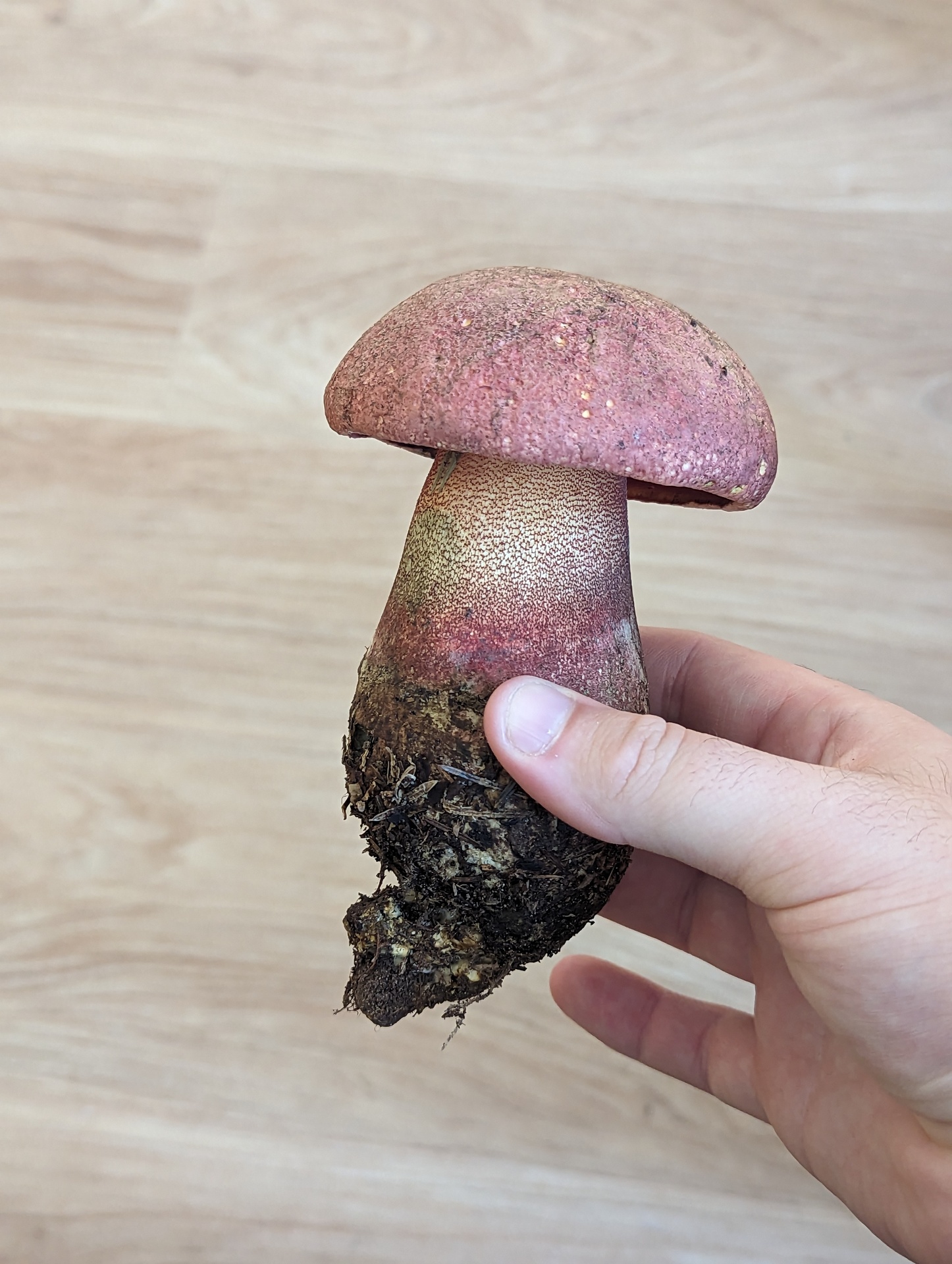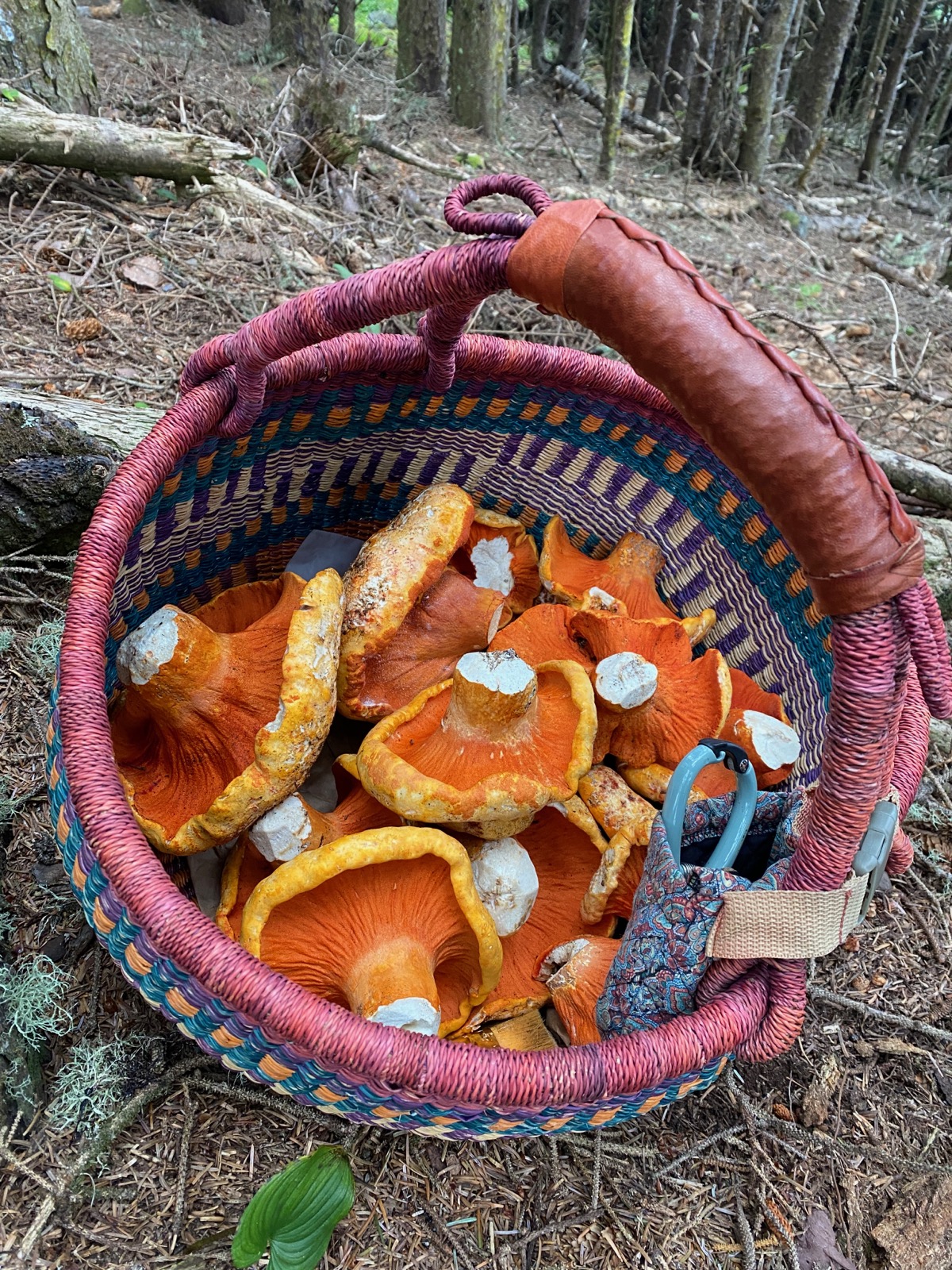
I’ve long been interested in foraging. There’s something delightful about tramping through the forest and harvesting the bounties that litter the earth, so often unseen or ignored.
This page is a log of the more interesting foraging finds I’ve found, along with some not-really-artful photos.
I’m not an expert mycologist by any means, so treat these identifications with many grains of salt. If you think I’ve mis-identified any of these, please email me, and I am happy to update the identification if I agree.
note: do not attempt to teach yourself foraging. Find a local foraging group or mycological society and attend group forays and classes to learn the ropes. Even experienced mushroom hunters make mistakes, sometimes resulting in sickness or death.
Typically whenever I try a new species of mushroom, I eat a single bit, somewhere around the size of the last joint of your pinky finger, or even half that, that I’ve sauteed in butter for around 5-10 minutes. This is an amount that, even if it were one of the more poisonous mushrooms, would be unlikely to cause any serious effects.
First hunt of the season, visited a confirmed “good spot” on the Oregon Coast. Was successful! Found a great haul of beautiful perfect lobster mushrooms, big but not buggy. My first time finding more than one at a time.

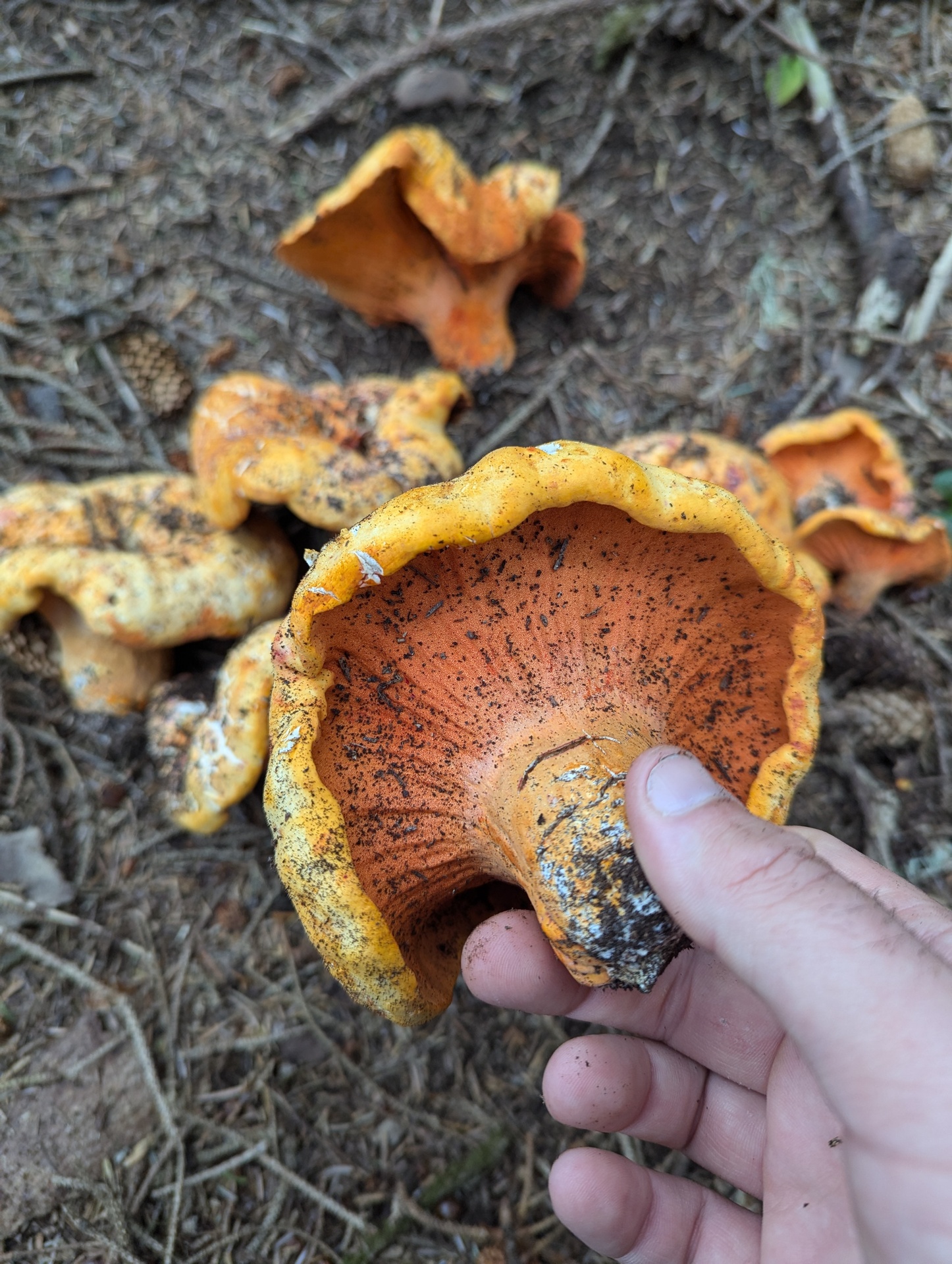
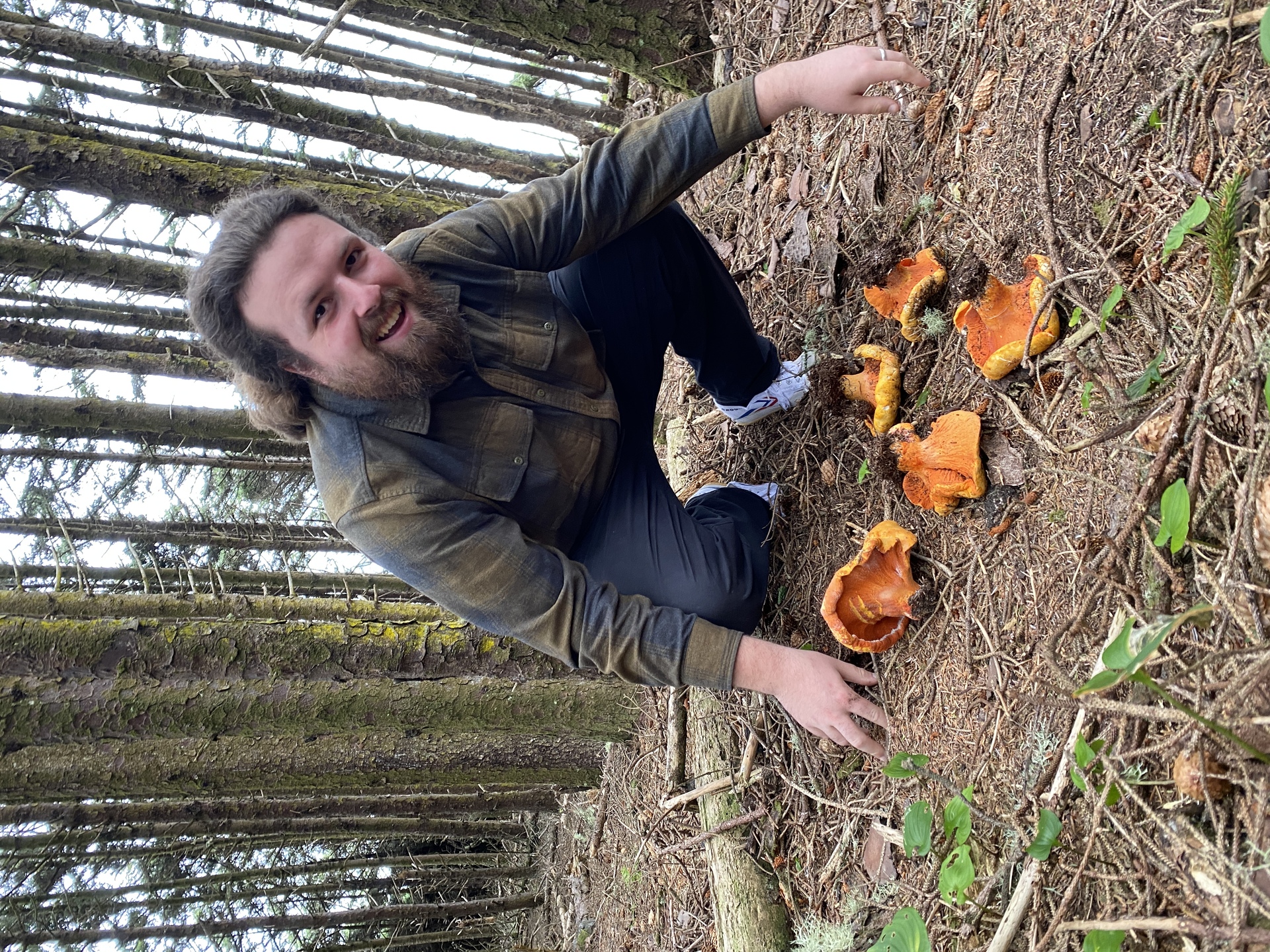
Found a huge variety of mushrooms out at a new spot that my sister recommended we check out. This was primarily old-growth douglas fir, with scatter hemlock and maple, at around 1700 feet elevation. There was scattered Oregon grape and sword ferns also.
We were so excited by the variety of fungi found that we didn’t end up taking a lot of photos, but some follow. A short list though of what we did find:
There was an incredible number of Russula here, with a lot of Russula brevipes, a relatively unremarkable mushroom best known as a major host of the parasitic fungus that produces lobster mushrooms.
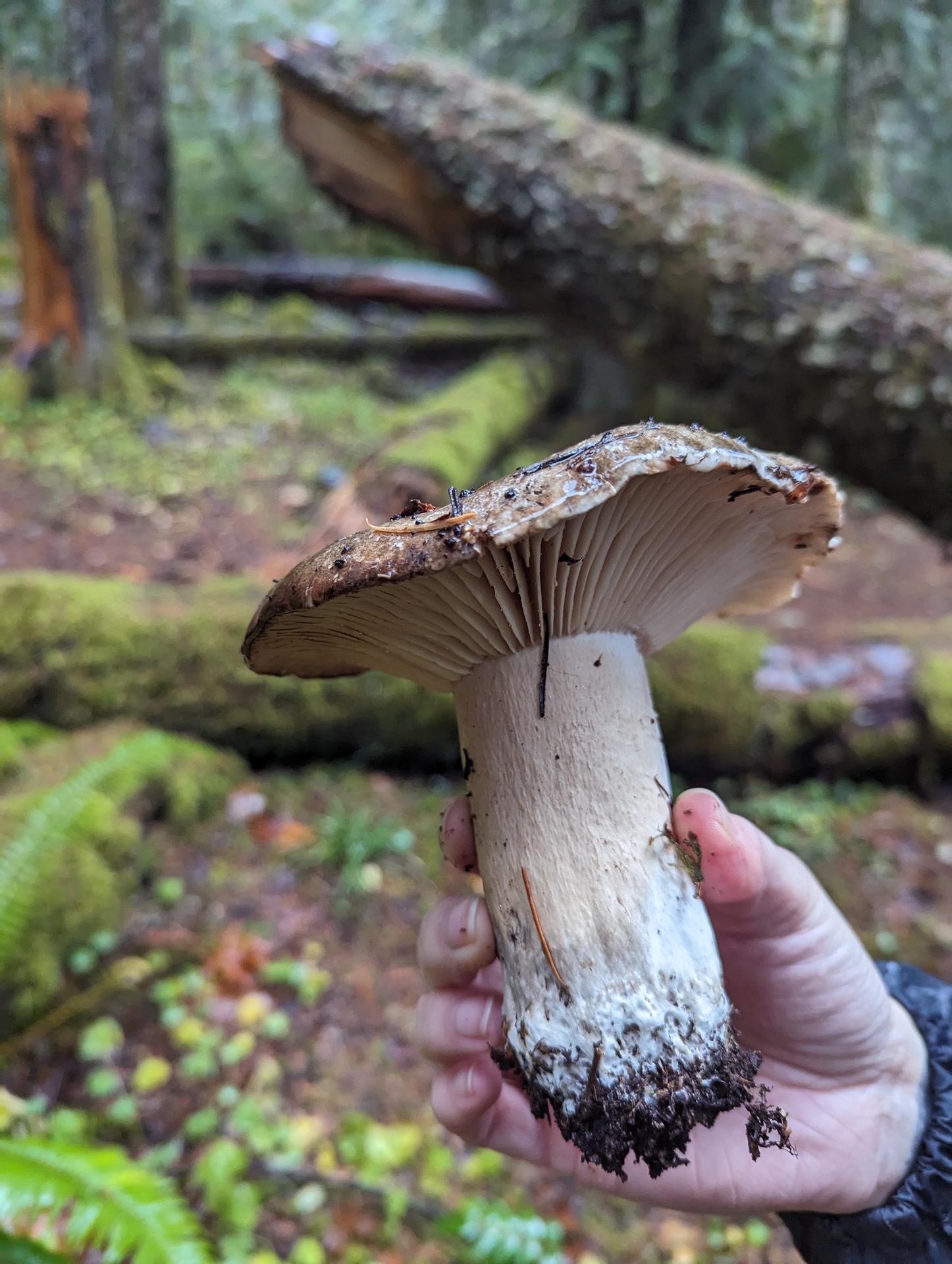
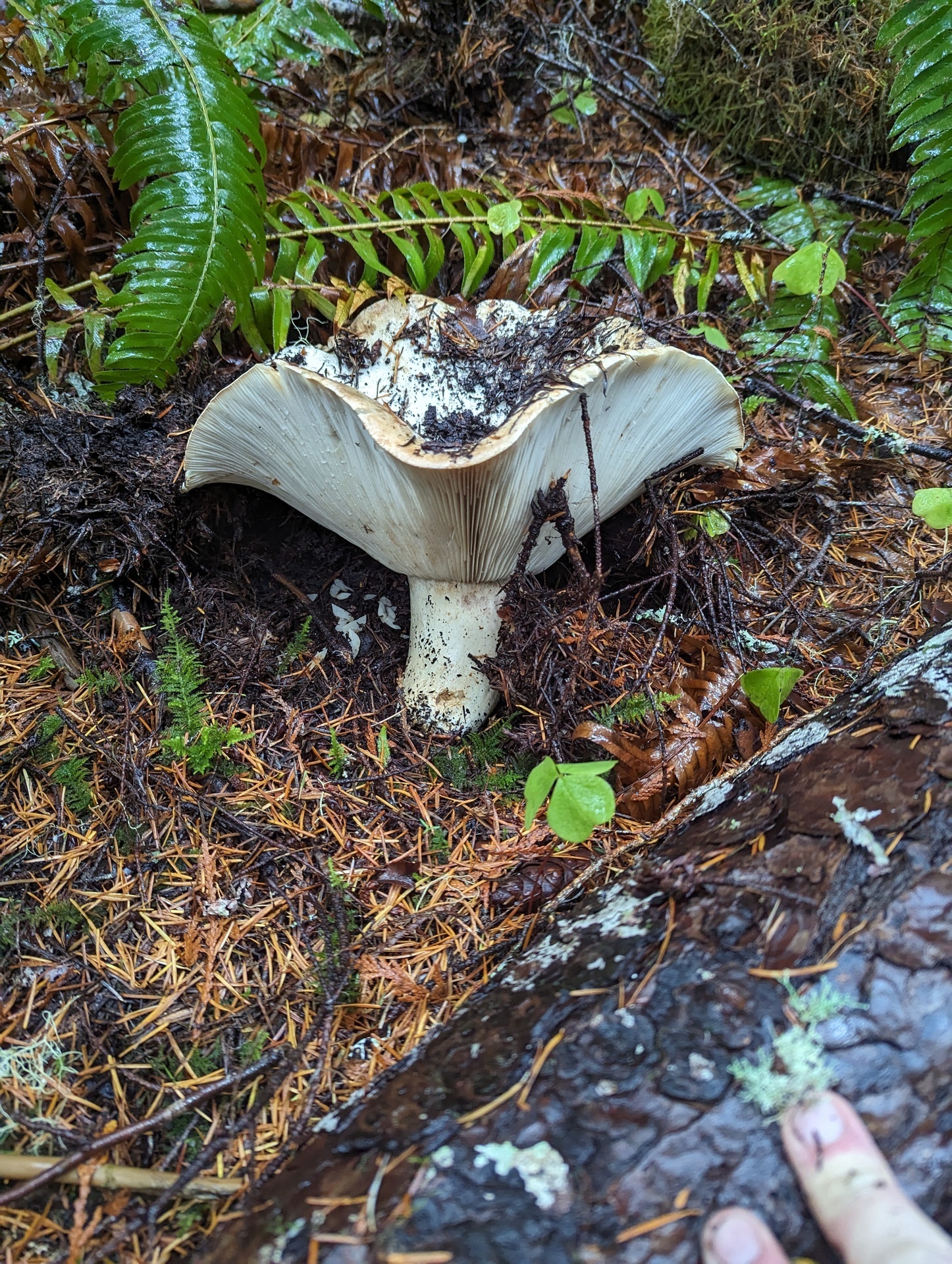
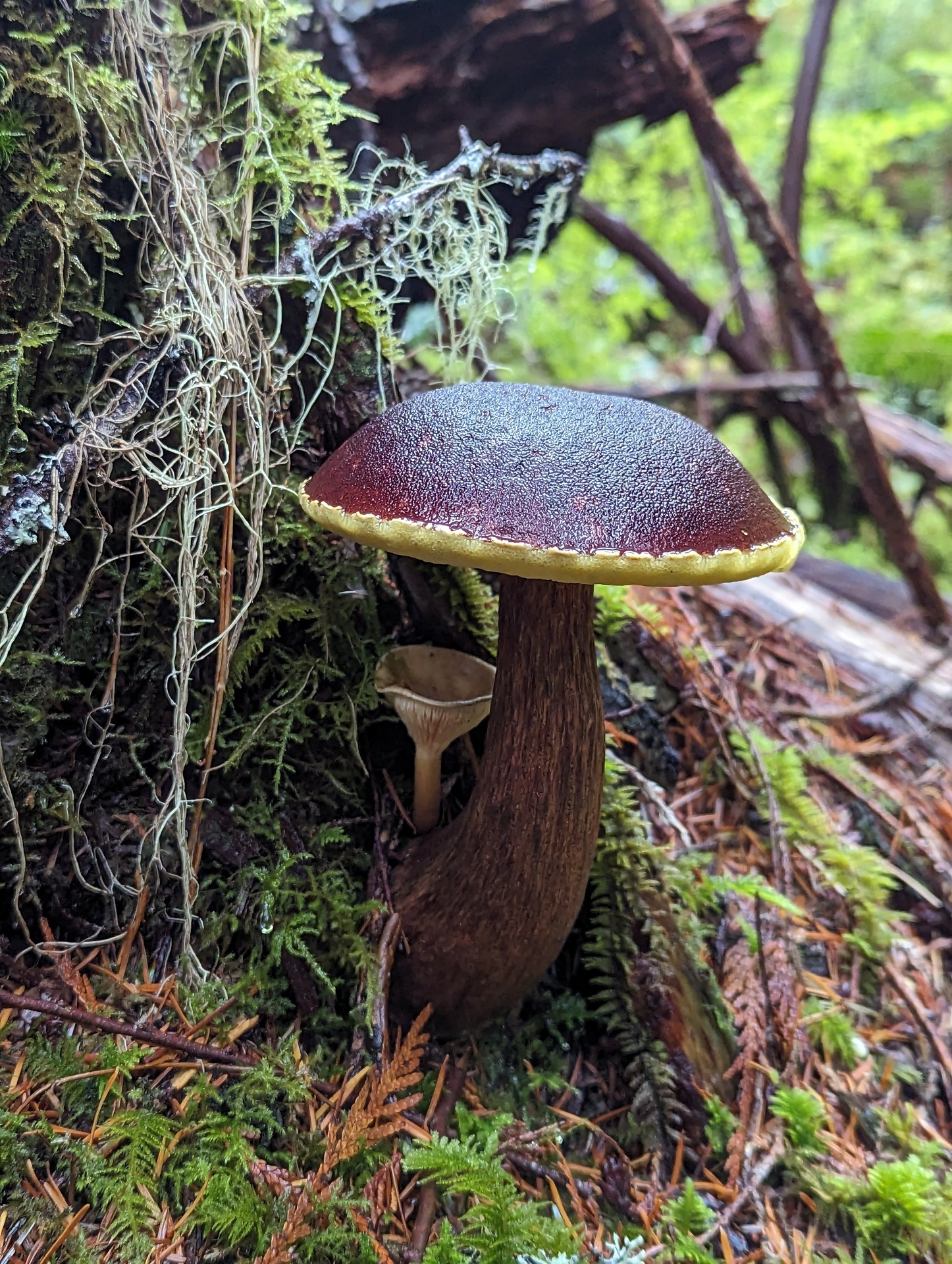
This was a sweet find (I left the one pictured untouched, there was a large patch of these just 15 feet away.)
Unfortunately, while these are apparently a choice bolete for most, I ended up with a minor tummyache the morning after eating just a small slice sauteed in butter.
While the symptoms were reminiscent of what I’ve gotten from other undercooked mushrooms, there’s no reason to tempt fate, particularly when I’ve got a number of other similar-tasting and more prolific fungi to eat, like the similarly lemony Suillus caerulescens.
These were found all over this particular area, and are beautiful and striking finds. Probably not worth eating, particularly as the entire category of these is 1. not considered choice, and 2. rather confusing and difficult to narrow to species level.
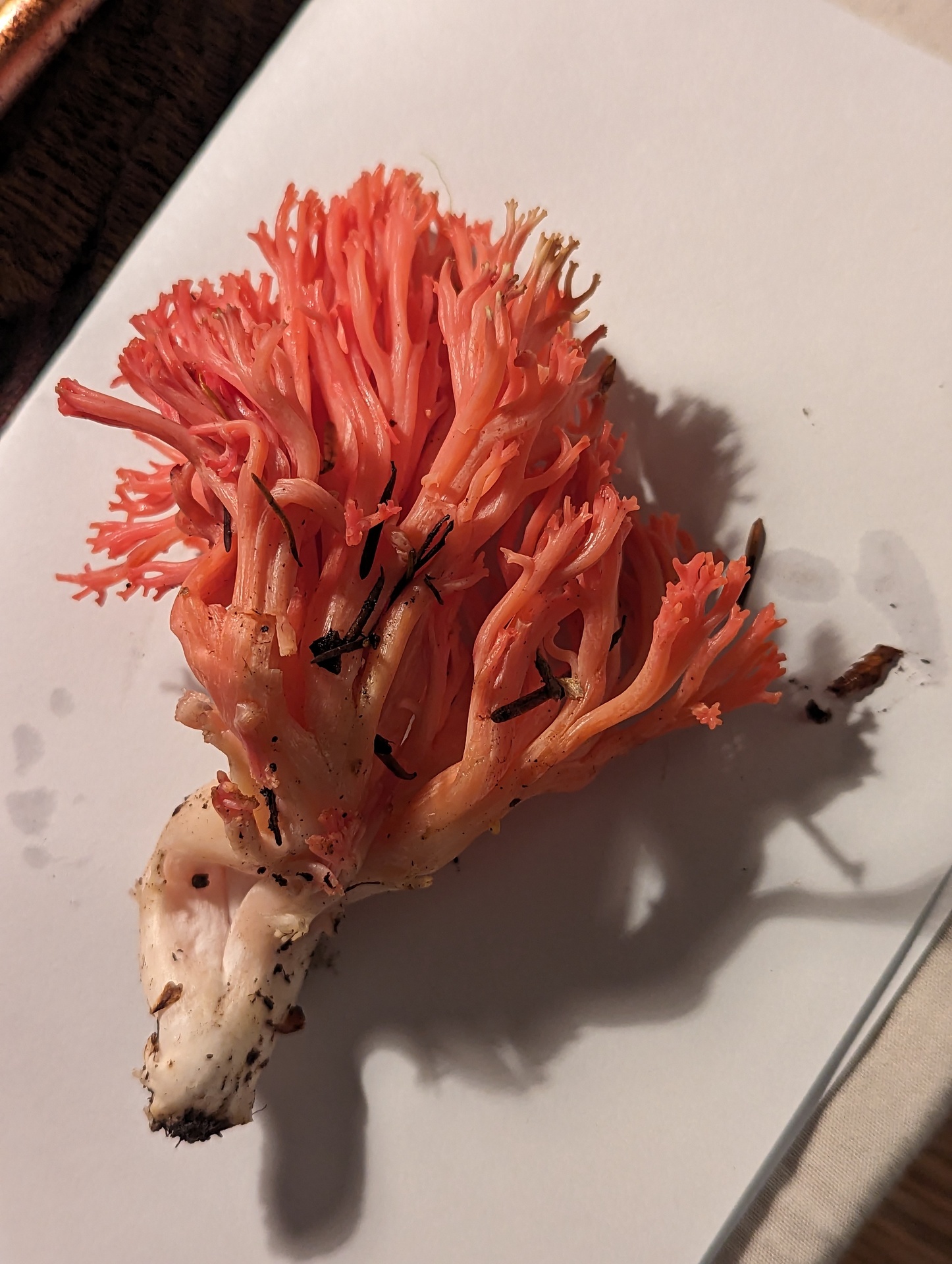
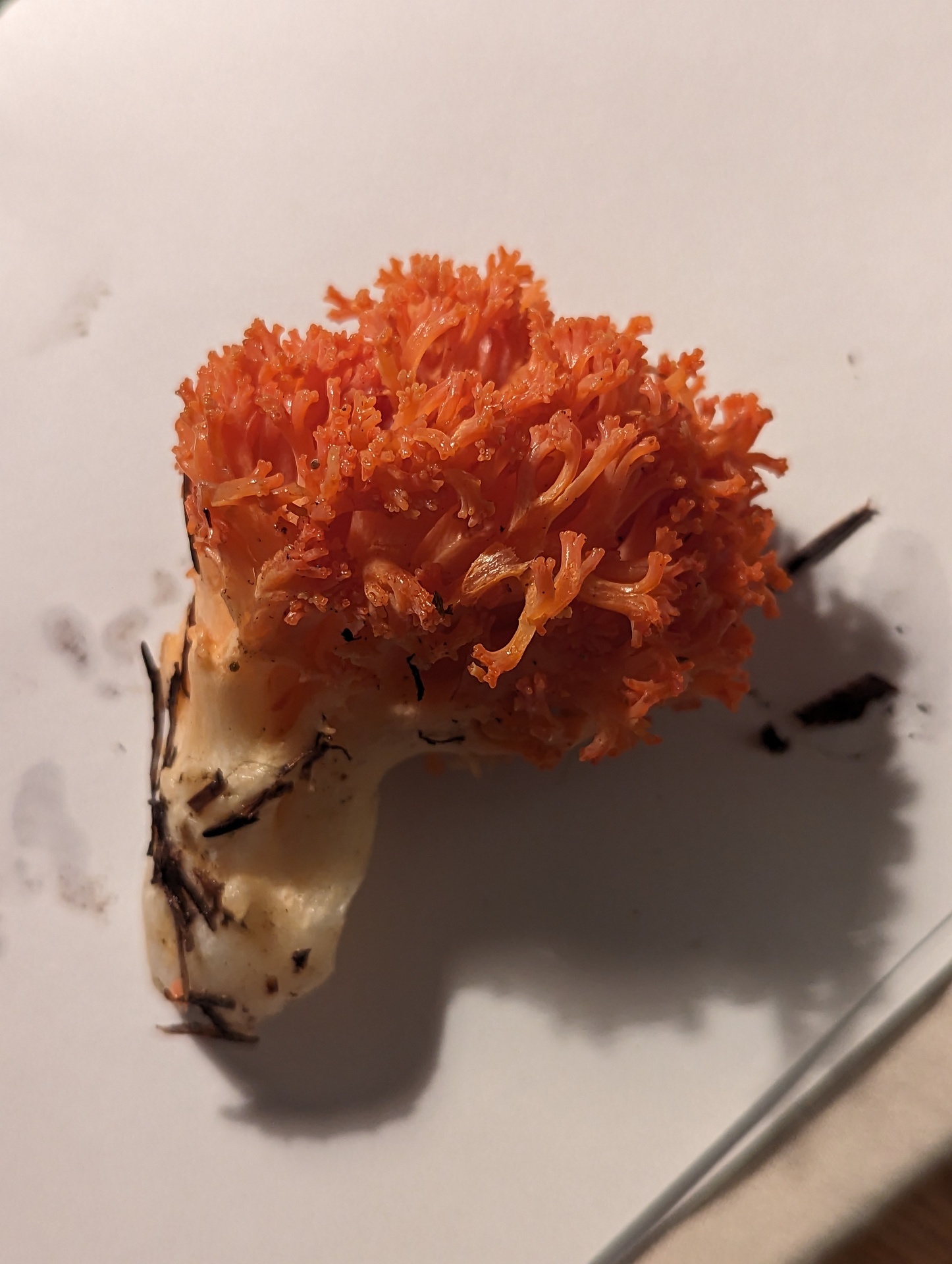
An absolutely beautiful fungi, this one doesn’t come through in photos enough to convey the absolutely incredible shimmering quality the cap has. It’s both rough and shiny, and a deep deep purple. It looks genuinely unearthly and unreal. A gorgeous find.
Their beauty rapidly fades, as by the time we got home and pulled them from the basket, they were already faded to a much darker and less saturated sort of purple-black.
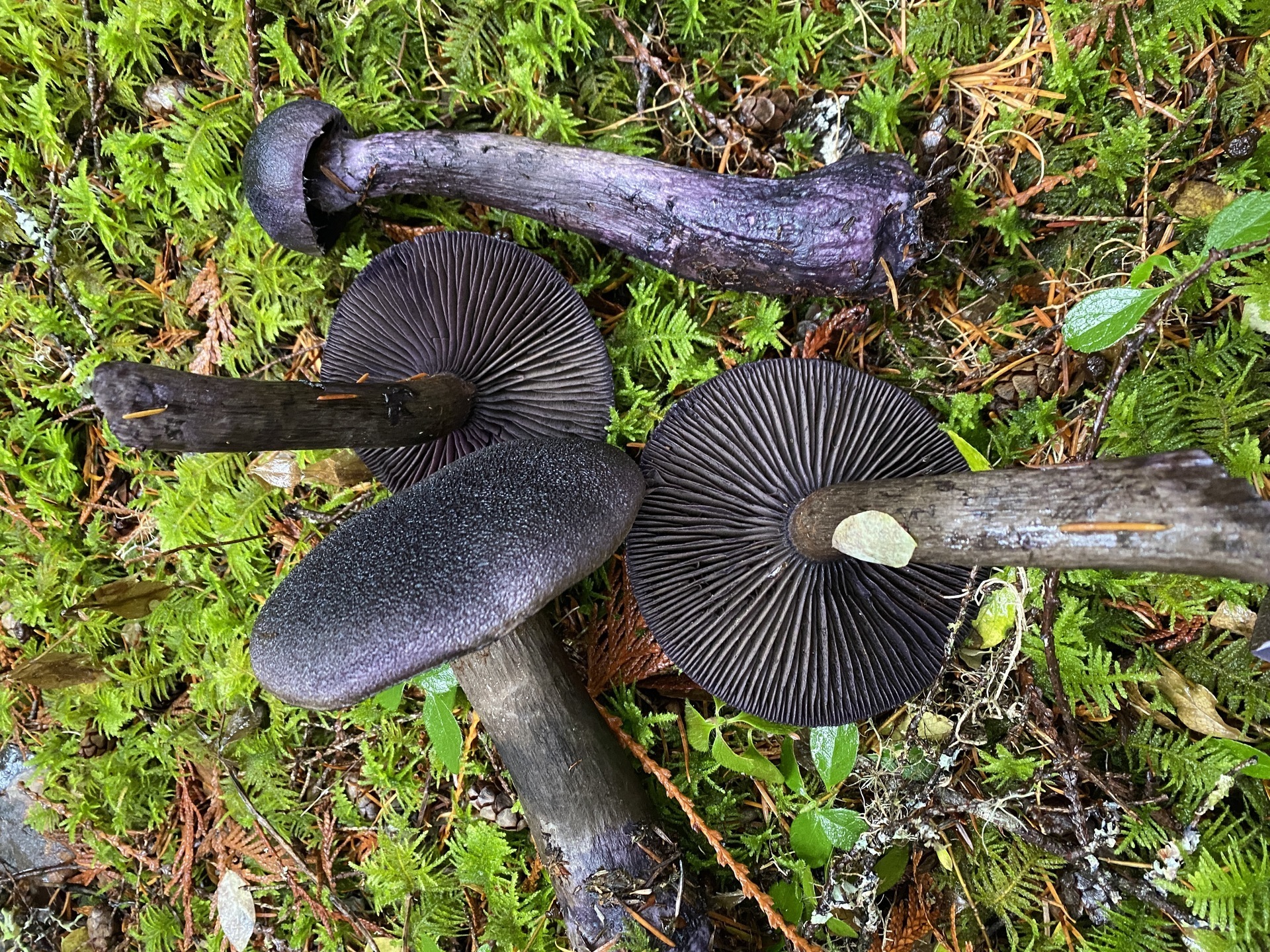
Found beneath/near some rhododendron, there were tons of these in all states of maturity. Many growing in clumped pairs that grew together in odd merged forms. Below is a staged photo containing specimens across the maturity spectrum:

Found growing on a little-trod portion of a nearby college campus, this was a weird little chonker growing in evergreen duff.
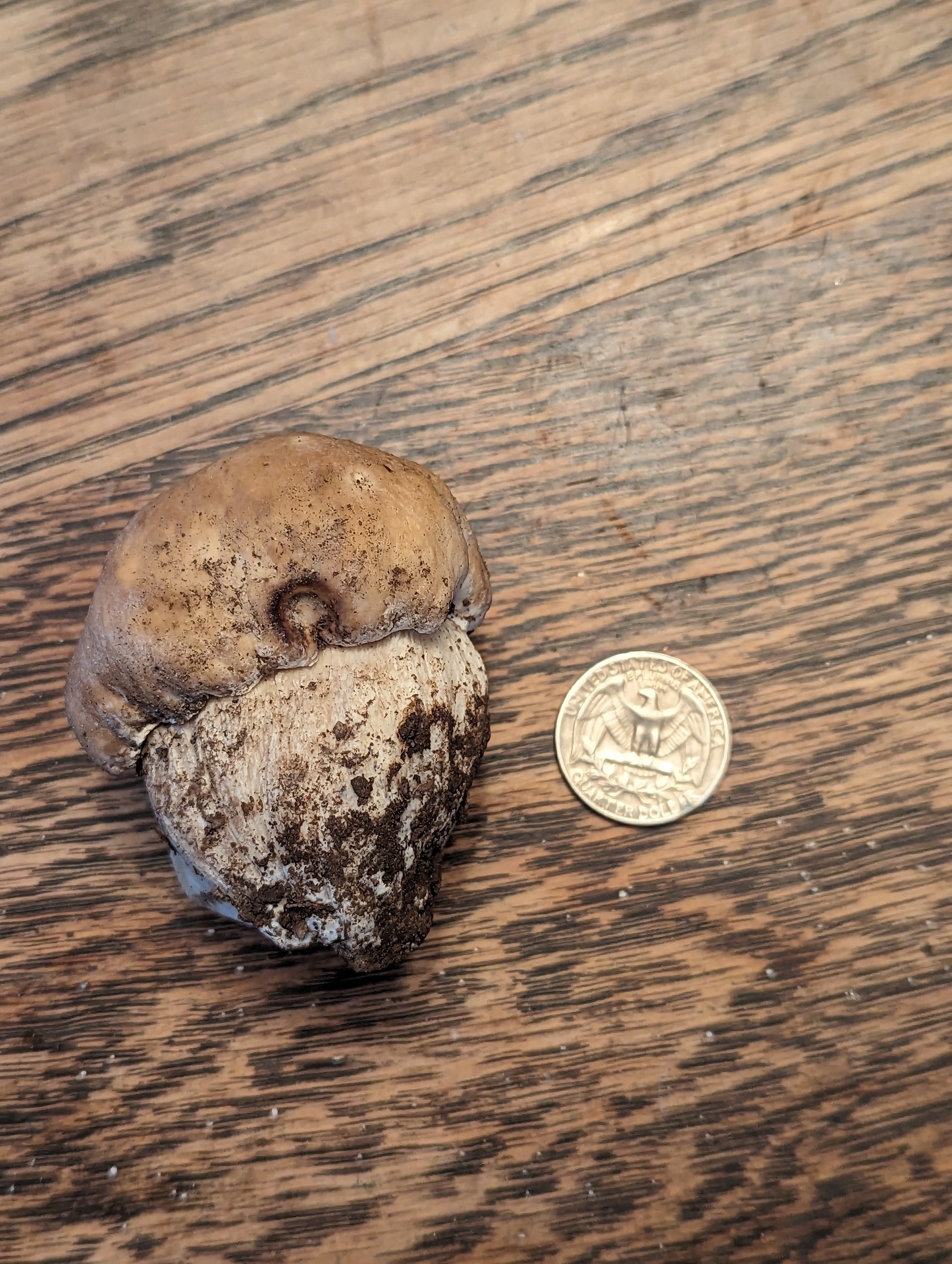
These are edible, and quite good - tasting like a deeper and richer shiitake. These do apparently cause gastric issues in some foragers, so thorough cooking is adviseable.
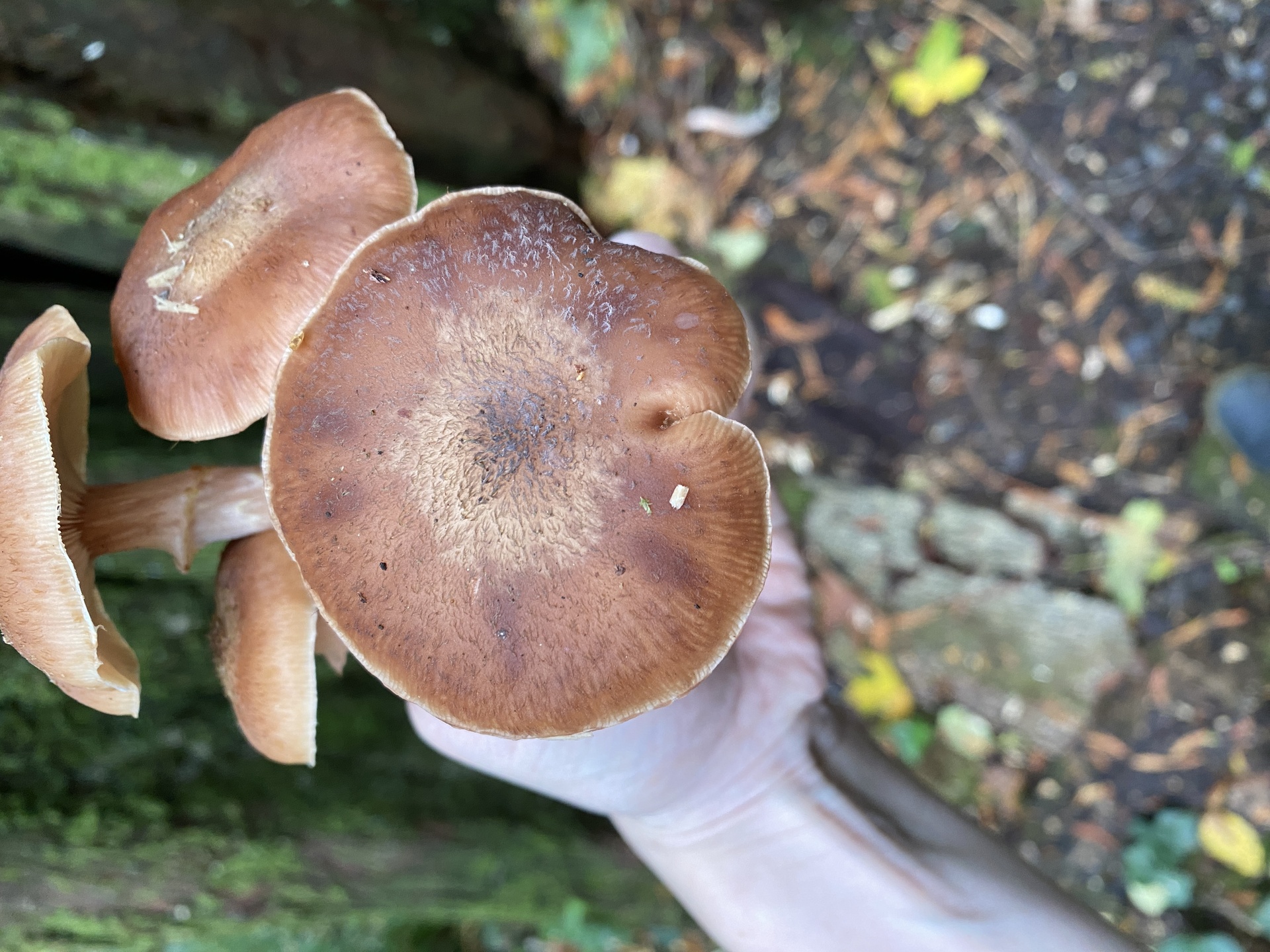
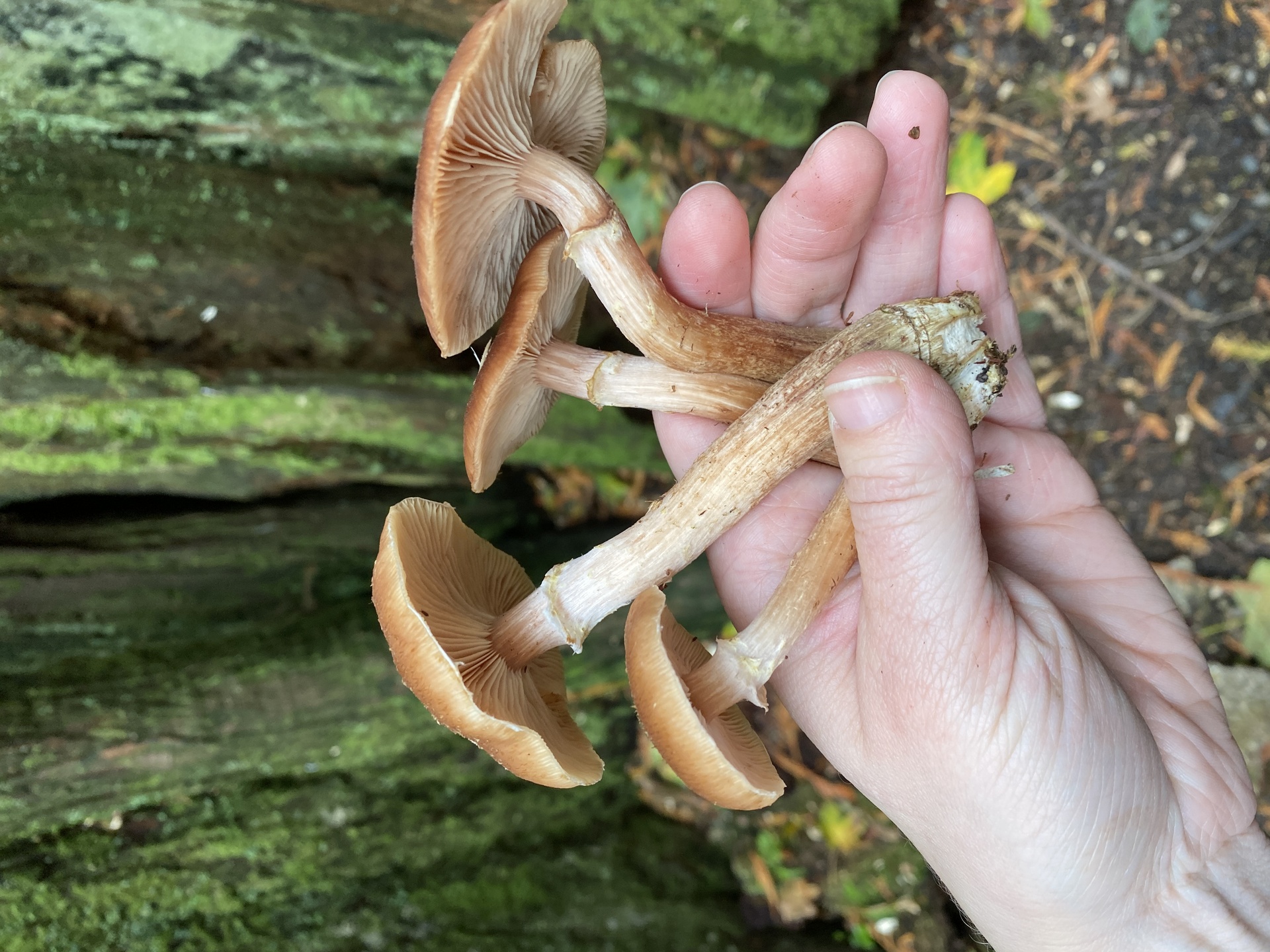
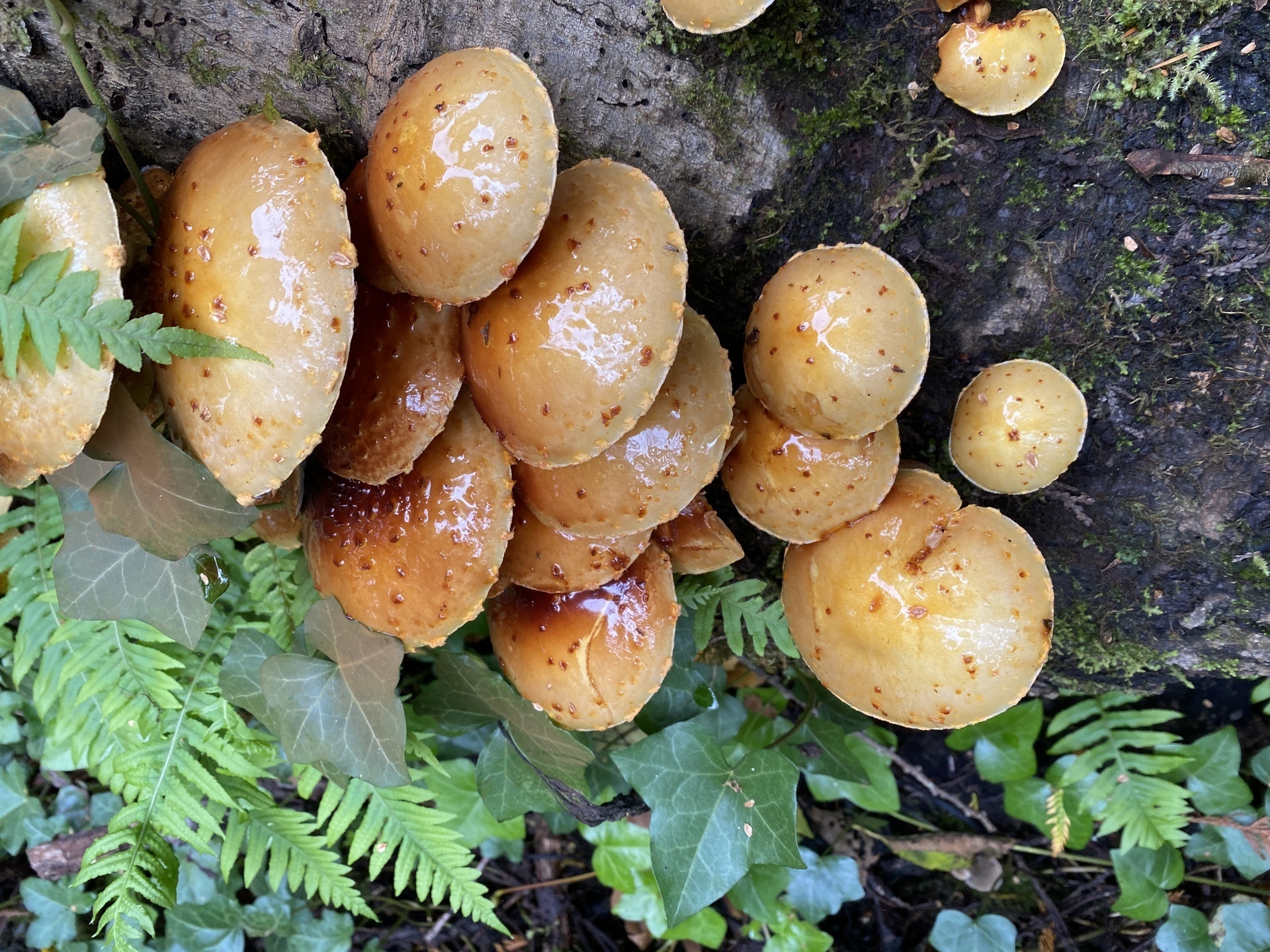


A beautiful example of a fairly common Amanita in my area. These are apparently edible and good, but I avoid Amanita generally as they harbor multiple deadly poisonous species.


A very common type, these are commonly known as Sulphur Tuft. By and large the genus is poisonous, but there is Hyphaloma capnoides which grows in my area and is edible - distinguishable by a spore print. I probably won’t ever eat these though - there are too many delicious and easy-to-identify mushrooms ahead of them on the list.
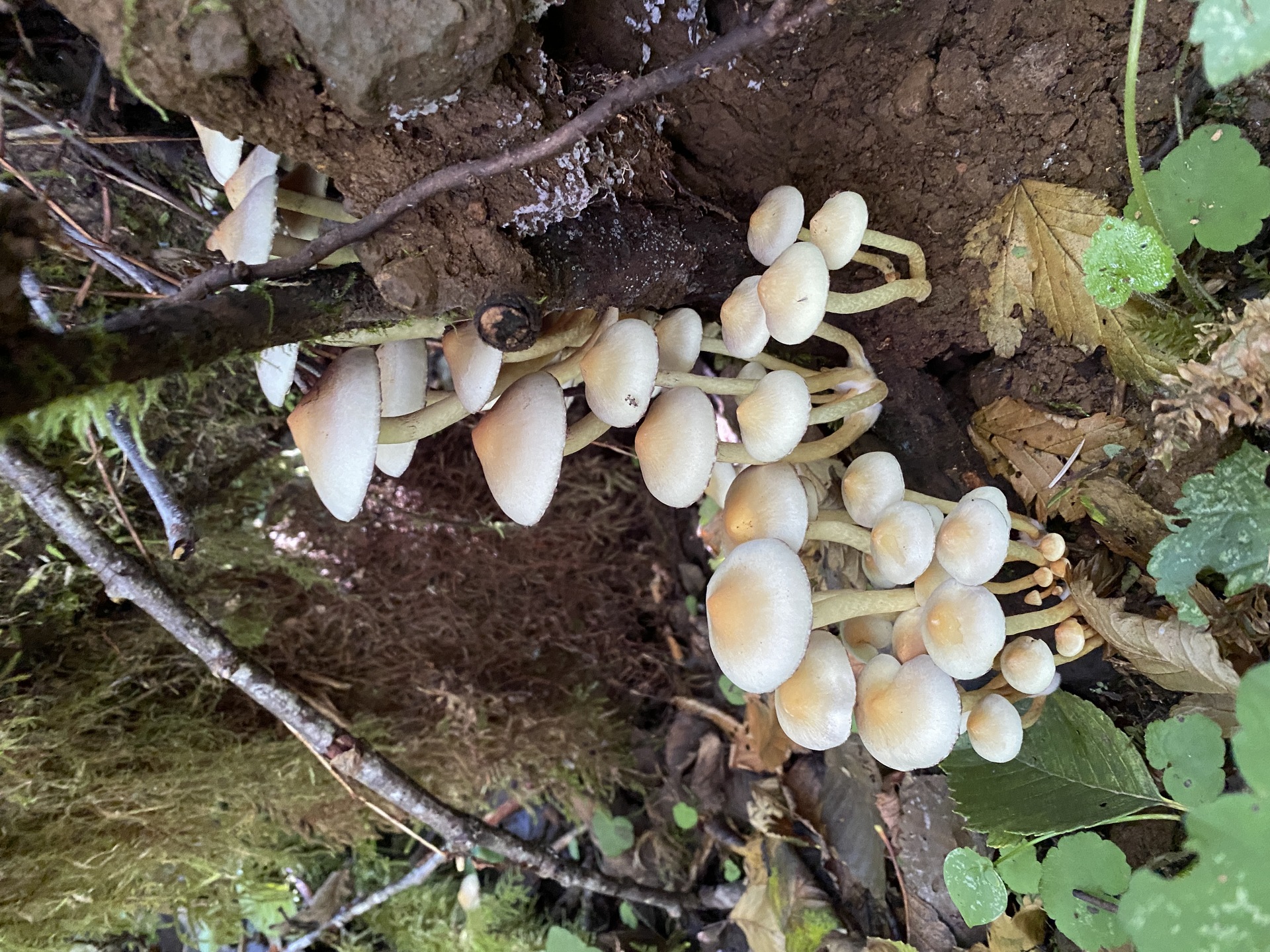
According to the online foraging community, it’s the season for Boletus edulis, the King Bolete.
No luck on my end, but we did see:
Not sharing any pictures today, but this log is mostly for me to track what I find and when/where. Mushrooms are so highly seasonal that week by week you watch a progression of fungi.
Likely Xerocomellus, these little guys appear to have merged early on.
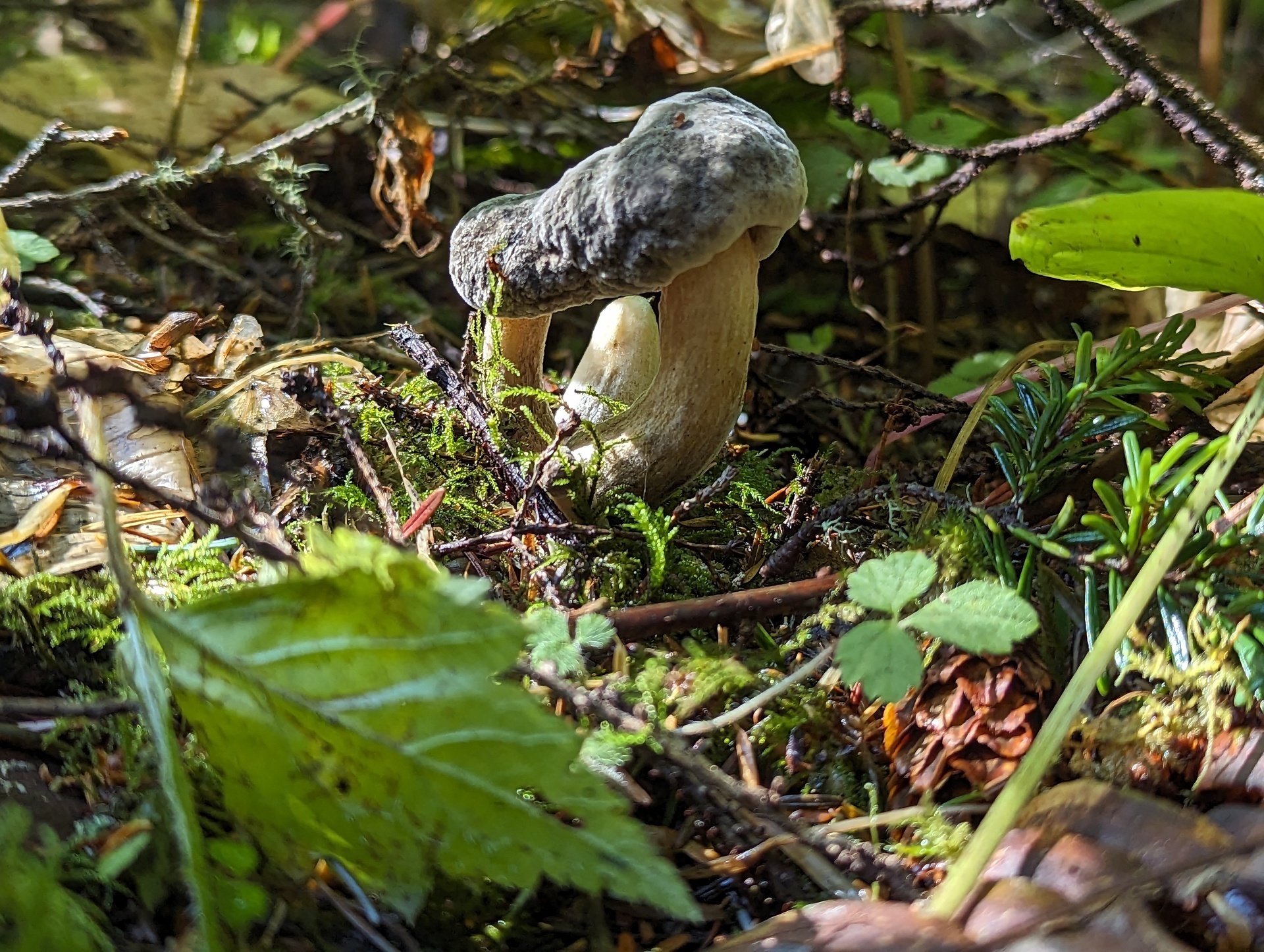
This type is considered fine eating in Europe and the northeastern United States and commonly named one of the “foolproof four” (however, no foraged mushrooms are truly foolproof.) It can cause allergic reactions in some people, particularly the types that grow on the West Coast and those that grow on conifers on the East Coast.
This specimen was found on conifers in the Pacific Northwest and therefore is likely Laetiporus conifericola. I ate just a couple bites and felt a mild reaction, probably due to undercooking (it’s much meatier and denser than your typical choice edible mushroom, so requires more cooking than I thought.) Recommended practice is 15 minutes boiling, which I’ll be testing next.

This genus is nearly all somewhat poisonous, and generally distinctive due to the red coloring, blue staining when bruised, and red pore surface. This particular species is one of the only Boletaceae that are known to have caused deaths (just two species in the family have ever been implicated in deaths.)
